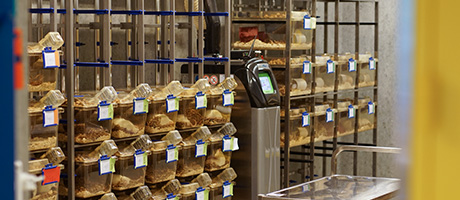Housing and breeding
The Department of Experimental Medicine offers housing and breeding of the most common experimental animals of the highest standard. At this page, you can find a detailed description of our housing and breeding standards.

Rodents
All rodents are housed in solid bottom cages with bedding, nesting material and enrichment items. At the AKB and RH units, the rodents are housed in conventional static cages. In all other units, the rodents are housed in Individually Ventilated Cage-systems. Food and water is provided ad libitum.
Environmental parameters
All animal rooms have ventilation specially designed for the housing of experimental animals. Most rodent units are equipped with individually ventilated cage (IVC) racks. The environmental parameters in all rodent areas are generally set on room level to 8-10 ACH (air changes per hour) for rooms with IVCs (low stocking density), temperature: 22°C (±2°C), and humidity: 55% (±10 %).
Space provisions
Space provisions – cage space per animal – at the Department are in accordance with both EU and national legislation as well as the ILAR Guide. The DVO ("Dyrevelfærdsorgan", Animal Welfare Body) at the Department has made internal guidelines that generally assign more space for young animals than required by the law, to ensure that the animals as they grow may remain in their social groupings for the entirety of an experiment in order to improve animal wellbeing. For more detailed information, please see “Other species" above.
Enrichment
Animals are provided with various forms of environmental enrichment in order to encourage species-specific behaviors, to reduce stress and boredom, and to enhance animal wellbeing. Social species are always kept in pairs or small groups (a legal requirement) according to species specific requirements. Single housing is not used unless deemed necessary for experimental or health and wellbeing considerations.
Breeding
The Department's animal technicians are skilled in colony management. They can help with routine colony maintenance or more specialized procedures. Examples of supported services include:
- Rodent colony management and pedigree maintenance
- Breeding, weaning and euthanasia
- Identification by ear tag, ear punch or microchip
- Sample collection (samples for genotyping: ear punch, buccal swab, blood samples)
Health monitoring
Rodent colonies at AEM are continually monitored for infectious agents according to FELASA guidelines.
